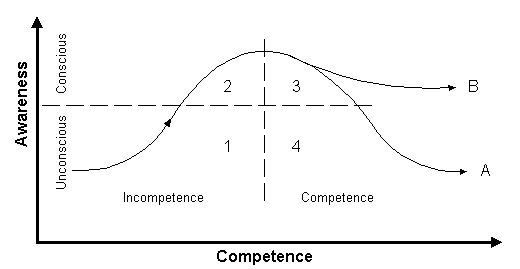We all have emotions, no matter who we are or how well we have trained ourselves to manage them. They come and go, all the time. What sets people apart is their ability to understand their emotions, see them for what they are and respond accordingly.
The Observer and the Reactor are two different states that reflect how a person responds to emotions. Developing the mindset of an Observer is a critical practice that facilitates vast personal growth.
Observer State vs. Reactor State
In the Observers state, the individual can watch themselves and consciously figure out their emotions and behaviours. They think about what is in their control and what is not and respectively make an informative decision on what to do next. In the Reactor state, a person will act immediately in response to a feeling, letting emotions control them. Sometimes this might be good, but most of the time, it’s more beneficial to see the situation from all angles before taking action to make better decisions.
What is your most prevalent state? The Observer, the Reactor or both?
If your tendency is towards the Reactor state, you’ll find the process we share below useful for helping you develop your capabilities as an Observer. But first, let’s look at the common emotions we all experience and where our responses to these emotions step from.
The function of emotions
Emotions are useful indicators for learning what is important to you, and motivators for taking action.
According the American psychologist Dr. Robert Plutchik, humans experience eight primary emotions. We are born with these emotions wired into our brains. This wiring causes our body to react in particular ways in response to these emotions when they arise. These eight primary emotions are:
- Anger: fury, outrage, wrath, irritability, hostility, resentment, and violence.
- Sadness: grief, sorrow, gloom, melancholy, despair, loneliness, and depression.
- Fear: anxiety, apprehension, nervousness, dread, fright, and panic.
- Joy: enjoyment, happiness, relief, bliss, delight, pride, thrill, and ecstasy.
- Interest: acceptance, friendliness, trust, kindness, affection, love, and devotion.
- Surprise: shock, astonishment, amazement, astound, and wonder.
- Disgust: contempt, disdain, scorn, aversion, distaste, and revulsion.
- Shame: guilt, embarrassment, chagrin, remorse, regret, and contrition
All other emotions are a combination of these eight emotions.
Sometimes people experience secondary emotions, which is an emotional reaction to the initial emotion, such as feeling shame when you get angry or feeling angry when you have a shame response.
Although these feelings are hard-wired into our body, what triggers them and how we respond is learnt and varies widely between people. A trigger is a stimulus such as a smell, sound, sight, or experience that generates a strong emotion. Most people develop triggers and the resulting behaviours through experiences they have had throughout their lifetime.
Observing your own emotions, their triggers and conditioned responses is where things start to get interesting. This practice is an excellent way to learn about yourself and begin to change some of the behaviours that are not serving you well.
But it all starts with the practice of being the Observer.
How to become an Observer
You may have noticed the concept of being an Observer used in many wellbeing practices. Yoga practices encourage observing your movement and how your body feels like a reflection tool. Certain meditation practices teach a way of observing thoughts as they enter your mind and choosing what you do with them, instead of reacting to these thoughts and letting them control your behaviours. These practices promote the Observer mindset because of the vast benefits of centring yourself and controlling your emotions.
Journalling is another tool that promotes being an Observer, as it is a way to identify and assess your thoughts and feelings by putting them down on paper. You can read more about the practice of Journalling in our blog ‘Building the Habit of Journalling’.
Below we discuss a process for developing and maintain the observer mindset as often as you can in your day-to-day life. This is a process that you might like to discuss with your mentor or introduce it to your mentee as a self-assessment tool.
Step 1: Assessing your emotions retrospectively
Catching and assessing your emotions as they arise is no easy feat. Our automatic responses to certain emotions are often so hard-wired that seeing yourself when the emotion is in full force can be difficult. Often the most manageable way to start analysing your emotions is by reflecting on the event after it has happened. For example, if you felt angry in a meeting and said something you wish you hadn’t (and maybe you’re feeling shame as the subsequent emotion), take time after the event to reflect on what happened. What was the trigger for the emotion, what emotion did you feel, and what was the action you took as a result? By retrospectively assessing the occurrence, you can understand what specifically caused the emotional response, whether it was justified, and whether your subsequent actions served you or the cause well.
Emotions can be very useful motivators of action. This exercise is not about suppressing emotions. The intention is to train yourself to take the course of action that serves you best.
Step 2: Observing your emotions as they arise
By building the habit of assessing your emotional responses retroactively, you will become more aware of the emotions that show up for you and how they feel; what they do to your body, what they do to your mind. This will better prepare you to notice an emotional response as it happens.
So how can you catch yourself and become an observer instead of a reactor?
An observer implies that there is space between the entity witnessing the action and the entity experiencing it. So to become an observer of yourself, you must first create space between the trigger and your response. Within this space, you can catch your emotion and decide how to act. Some practical ways to do this include, taking a deep breath, remove yourself from the environment or stimuli that started the emotional response, e.g. taking a break from the meeting, or waiting a while before responding to an email.
A useful way to realise that you’re highly emotional is through your bodily responses. Most people express emotional responses through their body, for example tapping your foot or scrunching hands when anxious, clenching fists or jaws when angry, looking down or away when feeling shame, leaning in when interested. You can learn a lot about your emotional state by observing your own body. Seeing what’s going on with your body might serve as the first observation that helps you to realise your emotional state.
This stage in the learning process is called being ‘consciously competent’. It means that you are able to implement the new skill that you have learnt, but it takes mindful effort; it is not a smooth process and might be slightly awkward. The stage before this in this learning process is called ‘consciously incompetent’, which means you are aware of the new skill and that you are not yet implementing it well. It is the stage described in ‘Step 1: Assessing your emotions retrospectively’. The learning curve’s final stage is ‘conscious competence’, which means the skill becomes a habit and does not require concentrated effort. It becomes the default setting. If you practice catching your emotions and giving yourself space to decide the best course of action, you will start to do this practice quickly and automatically so that it becomes a “natural” part of your way of being.

Step 3: Changing your automatic response
When you begin to master the observer mindset, you can experience your emotions with curiosity and control. You can become better at maintaining space in your mind so you can respond to your feelings with a greater perspective. This can become your newly conditioned automatic response, replacing the reactionary response that you had previously.
Suppose you feel frustrated with a decision made within your organisation. Instead of a non-productive response such as snapping back or being resentful, you may choose to explore what is causing the frustration through questioning. Your frustration may indicate that something about the decision is not right or does not make sense to you. By responding constructively and asking questions to understand more about the decision or request, the other person may realise they have made a mistake, or you may learn something that makes the decision make sense.
This new way of being, the Observer rather than the Reactor, will come from practising catching and assessing your emotions, and responding in a way that suits you best. It is a process that will take time and effort, but it’s a very valuable mindset for learning, growth and overall wellbeing.
Conclusion
The Observer mindset does not intend to suppress emotions. Instead, it aims to use emotions for the greatest benefit. By assessing your emotions, you can become better at filtering out irrational ones that have been learnt but are no longer serving you well. You can see them for what they are and choose not to react. You can instead focus on the emotions that are signalling something important. This practice is the key to developing your intuition and tapping into your deeper sense of self.
If it is an area that you would like to work on, you could consider discussing it with your mentor.
All the best!
Follow OneUpOneDown on Facebook, LinkedIn, Twitter and Instagram to stay tuned with the latest news.
